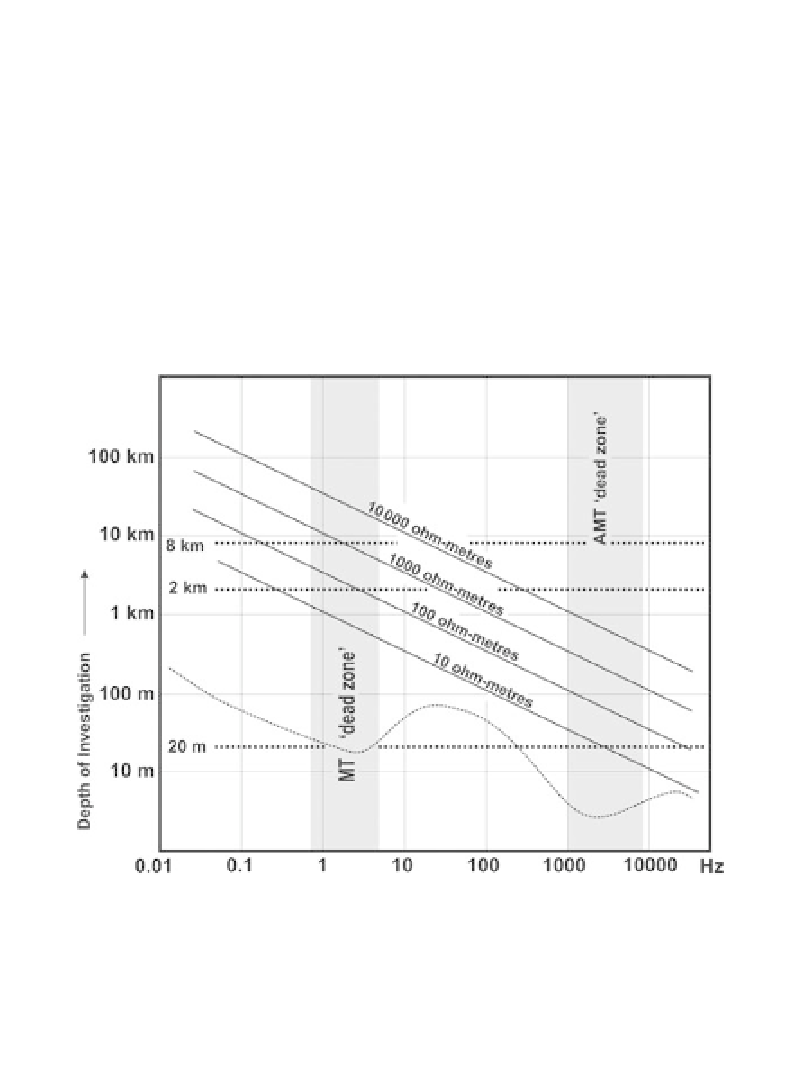Geology Reference
In-Depth Information
Ground resistivity in many sediment-covered areas is a function of depth;
i.e., the subsurface is horizontally layered or one-dimensional (1D). The
Cagniard equation then gives an
apparent resistivity
and the variation of
resistivity with depth can be investigated by using a range of frequencies. The
earliest applications of this principle (in
magnetotelluric
,or
MT
, surveys)
used the long-wavelength ionospheric radiation to probe the deep crust,
but interpretations were often made in terms of oversimplified 1D models,
and large errors were common. The more sophisticated 2D and even 3D
models made possible by modern computers and justified by the much
improved instrument sensitivities produce much better results. Although
complicated by the existence of the MT 'dead-band' (Figure 9.3), this form
of resistivity depth-sounding is now finding applications in oil industry
studies of sedimentary basins.
Figure 9.3
Variation of depth of investigation with frequency. The dotted
curve is a simplified version of the curve in Figure 9.1, with the resonance
peaks remov
ed
. Depth of inves
tigatio
n is defined as equal to the skin-depth
divided by
√
2
, or about
350
√
(ρ
/
f)
. Note the implications of the existence
of the audio-magnetotelluric (AMT) dead zone for mineral exploration at
depths of 20 m to 2 km, and of the MT dead zone for oil exploration at depths
of 2-8 km.

